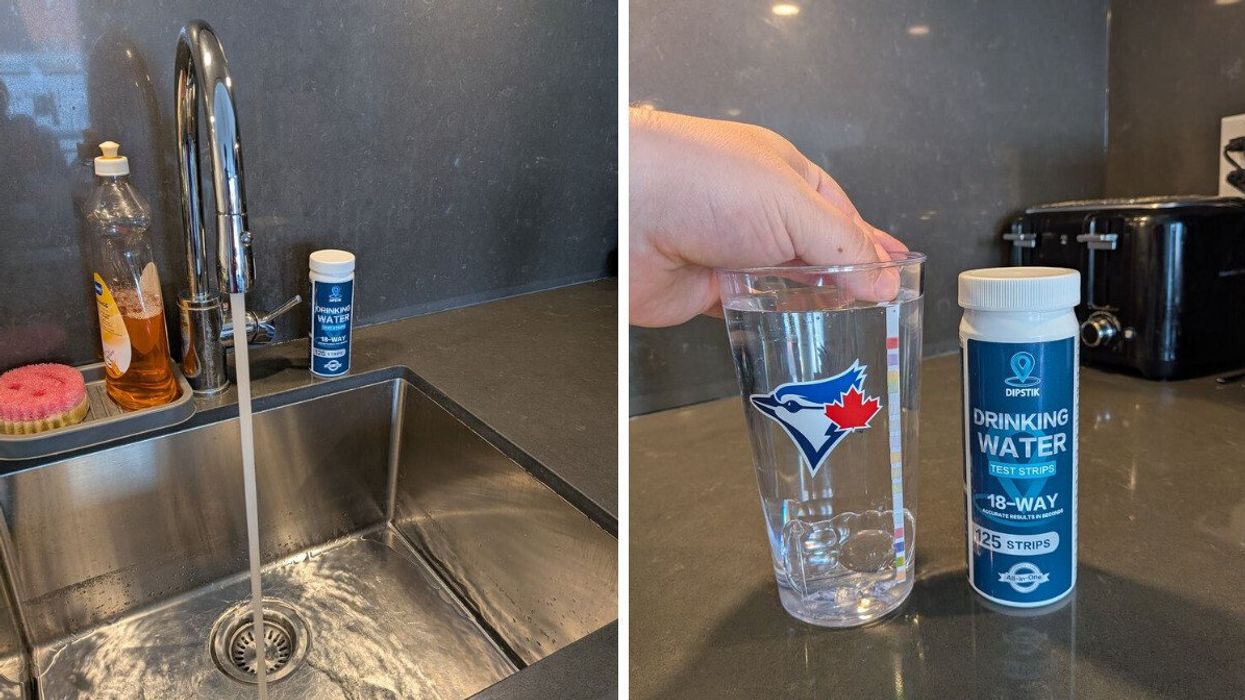I tested my Toronto apartment's tap water to see if it's actually safe to drink
And I was surprised by what I found out... 🚰

I tested the tap water in my Toronto apartment to determine its safety for drinking.
When I moved to Toronto in April 2024, one of my first questions was whether the tap water here was safe to drink. I didn't delve too deeply into the research; I went with my gut, but there was a reason behind that choice.
In my hometown of Tuam, Co. Galway, we get our drinking water from Lough (Lake) Corrib, which has always been safe to drink.
Like my hometown, Toronto gets most of its drinking water from a nearby natural resource, Lake Ontario. I believed that the drinking water was safe to drink, just as it was back in my house in Ireland.
There are pumping stations and treatment plants throughout the city that bring water in from Lake Ontario, but have you ever wondered how safe it is to drink?
According to the City of Toronto's 2024 Drinking Water System Annual Report, tap water either met or exceeded Ontario's regulations.
However, I wanted to test this for myself. I decided to put on my white coat and safety goggles and head to the lab. Well, it wasn't as scientific as that, but I did conduct a test in my apartment. Can we at least pretend I'm a scientist?
I purchased a drinking water testing kit on Amazon, which included 125 dipping strips. When you dip it into the water you're testing, it measures 16 different chemicals, including pH, zinc, iron, copper, lead and fluoride.
So, I filled my Toronto Blue Jays pint glass (did I mention they've got the second-best record in baseball?) with some tap water, and got my experiment underway.
I'd love to lie and tell you that it went swimmingly; however, there were a few hiccups. On my first attempt, I didn't realize I was supposed to wait 30 seconds (typical male, not reading the instructions). On the second attempt, I went to the balcony to get some natural light, and the colours started dripping down the paper as I held it downwards.

But third time lucky, I finally nailed it, and here are the findings.
- pH: 7.2 (safe range per Health Canada: 7.0–10.5)
- Alkalinity (Carbonate): 40 ppm (safe)
- Total hardness: 50 ppm (classified as "hard" water)
- Zinc: 0
- Free chlorine (bromine): 0.5 mg/L
- Iron: 0
- QAC & QUAT (quaternary ammonium compounds): 0
- Copper: 0
- Lead: 0
- Mercury: 0
- Nitrate: 10 mg/L
- Nitrite: 0
- Total chlorine: 0.5 mg/L
- Manganese: 0
- Sulphate: 0
- Fluoride: Between 0 and 4 mg/L (Health Canada target: 0.7 mg/L; maximum acceptable: 1.5 mg/L)
So, what does this all mean? To start, no traces of zinc, iron, QAC & QUAT, copper, lead, nitrite, manganese, or sulphates were found in the water — which is good.
The pH level was in a sweet spot (7.2) as the minimum required under Health Canada's guidelines is 7.0, whereas the maximum is 10.5.
The water would be classified as hard, but on the lower end of the scale. For example, a score between 250 and 425 would be considered "very hard" on the test kit.
When you see a number above zero for the free and total chlorine, it may cause alarm, but don't worry. According to Health Canada, free chlorine concentrations in most Canadian drinking water distribution systems range from 0.04 to 2.0 mg/L. The tap water in my apartment scored 0.5 mg/L.
According to Health Canada, the maximum acceptable concentration for nitrate in drinking water is 45 mg/L. This is equivalent to 10 mg/L measured as nitrate-nitrogen, which is precisely what the water scored.
According to the City, fluoride is added to Toronto's drinking water to reduce the risk of tooth decay and erosion. My tap water scored between 0 and 4 mg/L. Health Canada's target is 0.7 mg/L, with a maximum acceptable level of 1.5 mg/L. Therefore, further inspection would be necessary to determine exact figures and draw more specific conclusions.
So, what's the bottom line? The tap water in my apartment is pretty safe to drink, despite the fluoride's findings being wide-ranging. But as the Irish saying goes, "ara sure, it'll be grand!"
It never occurred to me to buy a filter, and now that I've made these findings, that won't change! I'll continue drinking the tap water the old-fashioned way.
Next time a server at a restaurant asks, "Is tap water OK?" I'll still have no problem saying, "yes."
